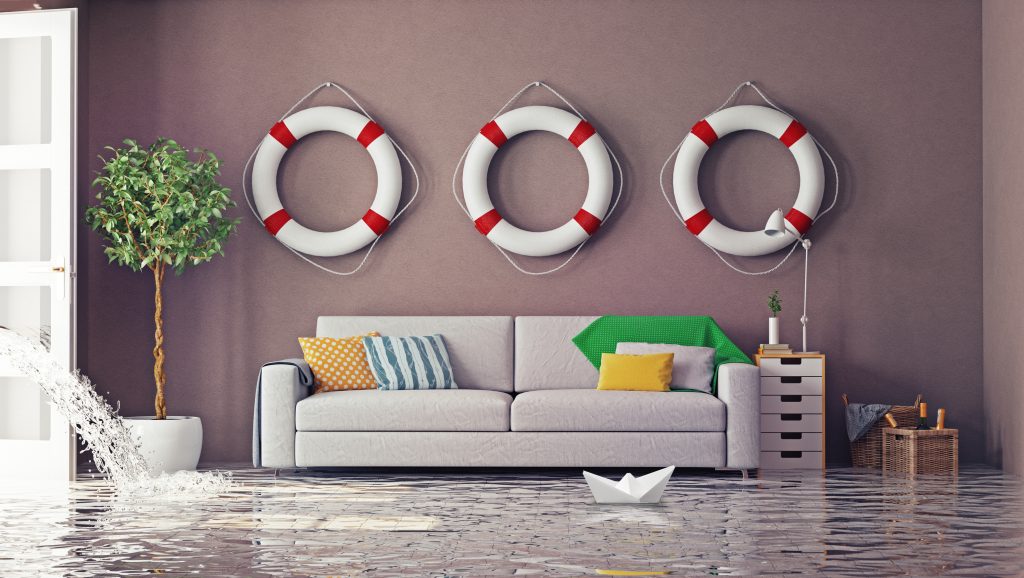Preparing Your Basement for a Rainy Spring
While we are thrilled for the seasonal return of mild temp’s and the blossoms that Nature brings, here in Indiana spring means something else too: rain, rain and more rain.
As homeowners, too much rain can be problematic. It can create extra moisture in your basement – or worse: flooding. A flooded basement is many homeowners’ biggest concern in the spring because not only is it costly to repair water damage to floors, walls and furnishings but often valuable and important personal effects are vulnerable as well. Damage from excessive water intrusion, however, can be prevented if you take the proper precautions. Here are a few steps you can take to protect your basement and your belongings during the rainy months here in Indiana.
Check your sump pump
As rain falls, water soaks into the ground and wants to go downhill to the lowest point of your house, typically into your basement or crawl space. As it pools, it only has one place to go: into your basement. It is your sump pump’s job to make sure your basement stays dry by collecting water and pushing it away from your home to the nearest sewer or retention pond.
Don’t wait until you’re ankle deep in a flooded basement to find out your sump pump isn’t working properly. Here’s an easy test: fill up a bucket of water and pour it into your sump pit. Your pump should kick on and start draining the water and then turn itself off when it’s done. If It doesn’t, or you notice any other issues, be sure to call your plumber right away to get it fixed or replaced.
Clean your gutters
Cleaning your gutters is a chore, but there’s an important reason to do it regularly during the spring. Falling rain gets caught in your gutters, flows down your downspout and is pushed away from the base of your house. If your gutters or downspouts are blocked, the water won’t be pushed out and will begin to pool around the base of your home and seep more heavily into your basement. So, remove leaves and twigs and keep gutters clear to minimize the amount of water collecting and pooling around your house.
Install laminate plank in the basement
Carpet and hardwood can easily be ruined by flooding. For basements at risk of flooding and moisture, we highly recommend installing waterproof rigid core resilient plank flooring. Unlike hardwood, waterproof plank won’t warp or bend in the presence of excess water. Even in the event that your basement floods, the planks will not be harmed and clean up is easy. Simply unlock the planks to expose, clean and dry out the subfloor. Most products can be fairly easily reinstalled.
Seal up cracks
If your basement has windows, it is especially important to ensure they are sealed up tight. If not, water will enter through these voids. Take the time or hire a professional to make sure your windows have been properly sealed and weatherproofed.
Also, be sure to have a look around at the foundation of your basement. Especially in older homes, cracks in the foundation and basement walls can be easy access points for water to find their way in. Hit the hardware store for supplies or, again, call a professional.
With the proper precautions, you can take the stress out of spring and get back to enjoying all the wonderful things that spring has to offer – and have a dry basement!
If you are interested in learning more about resilient plank flooring, check out our blog post about 100% RigidBoard Plank!


